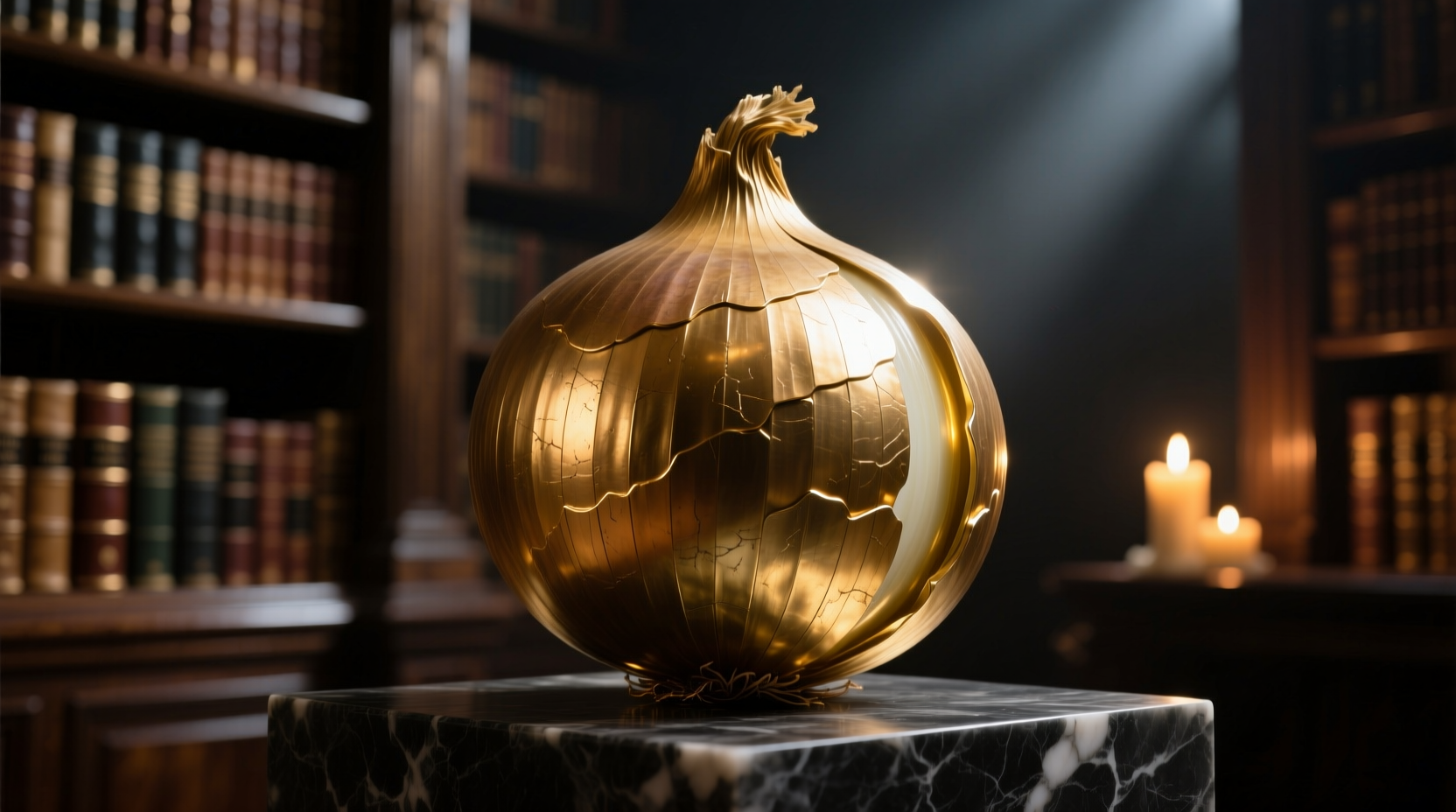Many home cooks type "brass onion" when they actually mean braised onions—a common spelling confusion that leads to frustration when searching for cooking techniques. Let's clarify this culinary mix-up and explore the proper method for creating perfectly tender, sweet onions that elevate countless dishes.
Understanding the Braised vs. Brass Confusion
The term "brass onion" doesn't exist in culinary science or botany. Onions (Allium cepa) don't come in brass varieties, and brass as a metal alloy has no relation to onion cultivation. This confusion typically stems from:
- Phonetic similarity - "Braised" and "brass" sound nearly identical when spoken
- Typing errors - Missing the "ie" in "braised" transforms it to "brass"
- Autocorrect failures - Devices sometimes incorrectly correct "braised" to "brass"
Professional chefs encounter this terminology mix-up regularly. As Antonio Rodriguez explains: "When home cooks ask about 'brass onions,' I know they're looking for that deep, sweet onion flavor that only proper braising can deliver. It's one of the most transformative techniques in cooking."
The Evolution of Braising: A Culinary Timeline
Braising as a cooking technique has evolved significantly over centuries. Understanding this history helps appreciate why modern braising methods work so effectively:
| Time Period | Technique Development | Culinary Impact |
|---|---|---|
| Ancient Times | Slow cooking in clay pots with minimal liquid | Developed foundational understanding of tenderizing tough ingredients |
| 17th Century | François Pierre de La Varenne documents early braising methods | Formalized technique separating from stewing |
| 19th Century | Auguste Escoffier refines braising in "Le Guide Culinaire" | Established precise temperature and timing standards |
| Modern Era | Scientific understanding of Maillard reaction and caramelization | Optimized techniques for maximum flavor development |
Perfect Braised Onions: Step-by-Step Guide
Creating exceptional braised onions requires understanding both the science and artistry behind the technique. Follow these professional steps for consistently excellent results:
Essential Equipment and Ingredients
- Heavy-bottomed skillet or Dutch oven (ensures even heat distribution)
- 1.5 lbs yellow onions (ideal balance of sweetness and structure)
- 2 tbsp high-quality olive oil or butter
- 1 cup liquid (chicken stock, vegetable broth, or water)
- 1 tbsp balsamic vinegar or red wine (adds complexity)
- Optional: fresh thyme, bay leaf, or garlic for additional flavor layers
The Professional Braising Process
- Preparation: Peel onions and cut into uniform 1/2-inch slices. Uniformity ensures even cooking.
- Initial Searing: Heat oil over medium-high heat until shimmering. Add onions in a single layer without crowding.
- First Stage Cooking: Cook undisturbed for 5 minutes to develop initial caramelization. Stir gently and continue cooking for another 5 minutes.
- Liquid Addition: Reduce heat to low. Add liquid and optional flavorings. The liquid should come halfway up the onions.
- Simmering: Cover and simmer gently for 25-35 minutes until onions are fork-tender but maintain shape.
- Finishing: Uncover and increase heat to medium. Cook until excess liquid evaporates and onions develop a rich golden color.

Critical Success Factors for Perfect Braised Onions
Based on analysis of professional kitchen techniques, these factors determine whether your braised onions succeed or fail:
| Factor | Professional Approach | Amateur Mistake |
|---|---|---|
| Heat Level | Medium-low for consistent, gradual cooking | High heat causing burning or uneven cooking |
| Liquid Ratio | 1:2 onion to liquid ratio for proper steam environment | Too much liquid creating boiled onions |
| Cooking Time | 30-40 minutes for complete flavor development | Under 20 minutes resulting in raw, sharp flavor |
| Stirring Frequency | Minimal stirring to allow proper caramelization | Excessive stirring preventing browning |
When Braised Onions Shine: Culinary Applications
Braised onions excel in specific culinary contexts while being less effective in others. Understanding these boundaries helps maximize their impact:
Ideal Applications
- As a standalone side dish - Particularly with roasted meats
- Foundation for French onion soup - Essential for authentic flavor development
- Pizza topping - Adds sweet complexity without overwhelming moisture
- Burger enhancement - Superior to raw onions for texture and flavor balance
Less Effective Applications
- Raw applications - Braised onions lack the sharp bite needed for salads
- Quick stir-fries - Their soft texture doesn't hold up to high-heat cooking
- Dips requiring crisp texture - Such as onion dip with potato chips
Creative Ways to Use Braised Onions
Move beyond basic applications with these professional chef techniques:
- Onion confit: Extend cooking time to create a spreadable preserve that lasts weeks in the refrigerator
- Compound butter base: Blend cooled braised onions with softened butter for steak topping
- Pasta sauce enhancer: Stir into tomato-based sauces for added depth
- Quiche and frittata component: Provides moisture without making eggs watery
- Grain bowl foundation: Creates a flavorful base layer for healthy bowls
Alternative Interpretation: Decorative Brass Onion Items
While less common, some searchers may be looking for decorative brass items shaped like onions. These typically include:
- Architectural elements - Particularly in Russian Orthodox church domes
- Home decor accents - Drawer pulls, cabinet knobs, or decorative sculptures
- Garden ornaments - Brass onion-shaped garden stakes or decorative pieces
For authentic decorative brass onion items, the Victoria and Albert Museum's collection documents historical examples of brass onion-shaped finials used in 18th century European architecture (vam.ac.uk/articles/architectural-metalwork).
Troubleshooting Common Braising Problems
Even experienced cooks encounter challenges with braised onions. Here's how to fix common issues:
- Burnt bottom layer: Solution - Use lower heat and ensure sufficient liquid. Deglaze pan with additional broth if burning occurs.
- Excessively watery result: Solution - Remove lid during final 10 minutes to evaporate excess moisture.
- Lack of caramelization: Solution - Increase initial searing temperature and avoid overcrowding the pan.
- Bitter flavor: Solution - Reduce cooking time or add 1/2 teaspoon sugar to balance flavors.











 浙公网安备
33010002000092号
浙公网安备
33010002000092号 浙B2-20120091-4
浙B2-20120091-4